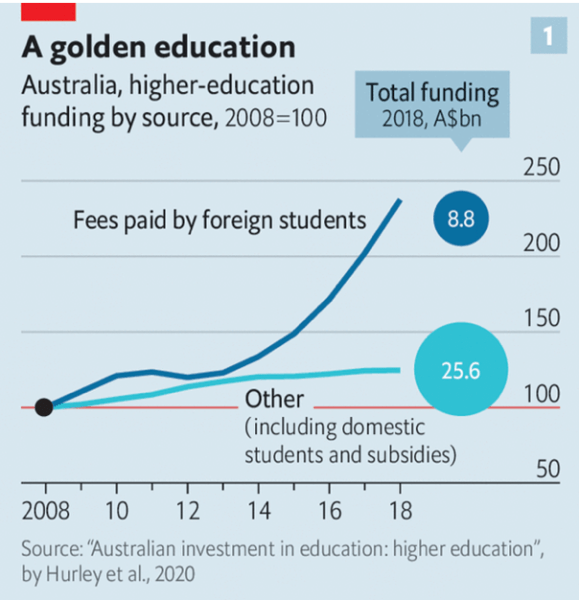No sooner do I lay out the case for the financial catastrophe facing colleges and universities than the cavalry comes in with reinforcements, in the form of a typically trenchant column from Megan McArdle, and two pieces in The Economist.
Let me pause here and observe simply that this formulation is a museum-grade specimen of the Marxist take on the labor theory of value. Which is what you expect from a political science professor. To continue”
And now we get to the essentializing, because the pandemic has made something undeniable: To a large extent, students have become customers. And professors should acknowledge their own role in getting us to that point, because the commodification of higher education is a direct byproduct of the transformation of college into the entrance examination for America’s middle class, something the professoriate has cheered on.
And this is the perfect rebuttal from the perspective of Austrian economics about how markets set values depending on the subjective and always changing preferences of consumers in the marketplace. Who today would spend $5.99 for a Pet Rock? It may have been worth $5.99 in 1978, but it’s worth zero today, no matter how much labor you put into the rock.
And we’re starting to regard our universities a bit like Pet Rocks. As McArdle continues:
U.S. higher education bundled “teaching and research” with a bunch of other things — residential amenities, sports teams, networking opportunities, career coaching, dating service and so forth. Among other effects, all this initially created a booming demand for professors; their numbers quintupled from 1940 to 1970 and then almost doubled again by 1988. Without that shift, most of the professors complaining about the commercialization of education would have had to take jobs in actual businesses. . .
The bundle was still tightly woven enough, however, that we could tell ourselves the learning was still the heart of the package. Then covid-19 came, and suddenly, the lectures and the homework were the only part schools could still deliver. Yet somehow, few students seem reassured that they’re getting most of what they were paying tuition for.
Megan doesn’t say so, but one clear subtext here is that we have more people in college than should be there—a theme that has been around for a long while now but denied by educational romantics. The shakeout coming now is going to prove this.
The Economist weighs in on a number of points I made in my previous post, noting that universities overseas (especially in the Anglosphere) are going to fare even worse:
In Australia foreign students provide a quarter of universities’ income (see chart 1). In Canada the tuition fees for a science degree at McGill, one of the country’s top universities, cost C$45,656 ($34,000) a year for an overseas student, compared with C$2,623 for a local.
Even before the pandemic, many such universities worried about worsening relations with China, the biggest source of international students. And higher education in America, Australia and Britain has also faced increasing scepticism from conservative-leaning governments about the value of a university degree. Academics, used to tricky questions, now face an existential one: how will universities survive with many fewer students in them?
And this chart is pretty killer:

About American universities:
Over the past few months middling state universities and liberal-arts colleges have been far slower to announce reduced access to campuses so as not to put off potential students. Even before the crisis, a demographic dip in the number of 18-year-olds had caused around 50 colleges to close or merge. That is a small portion of America’s 4,000-odd higher-education institutions, but the trend is now likely to accelerate, as colleges lose out on money from accommodation and funding from state capitals.
The Economist‘s “leader” (meaning editorial) on the subject notes this:
Governments invest in higher education to boost productivity by increasing human capital. But even as universities have boomed, productivity growth in the rich-country economies has fallen.
Gee, I wonder if the proliferation of identity politics departments has something to do with this?
Many politicians suspect that universities are not teaching the right subjects, and are producing more graduates than labour markets need. Small wonder that the state is beginning to pull back.
Where’s the bad news here?







